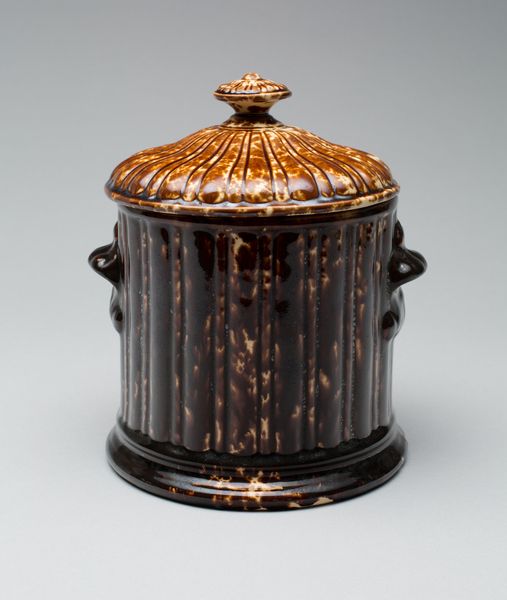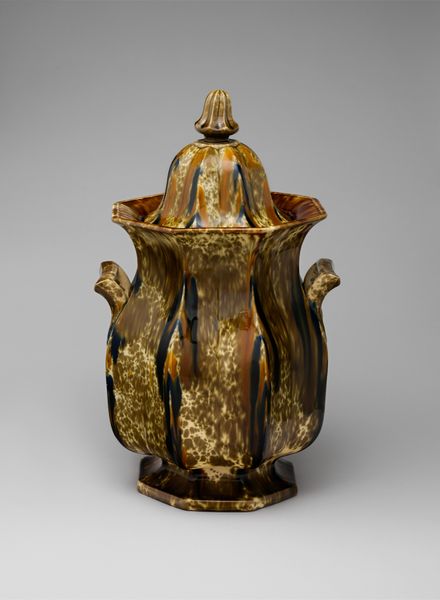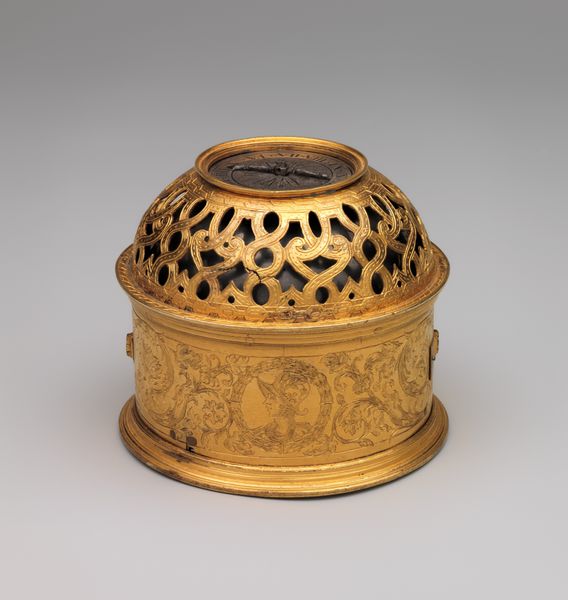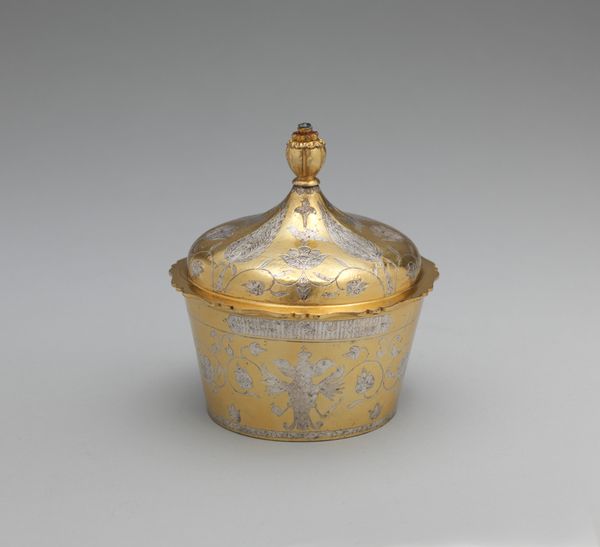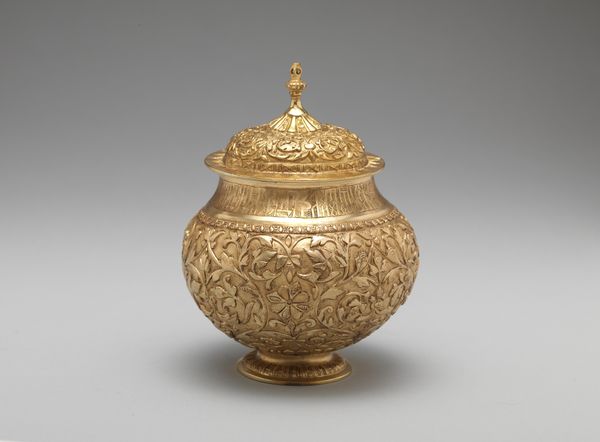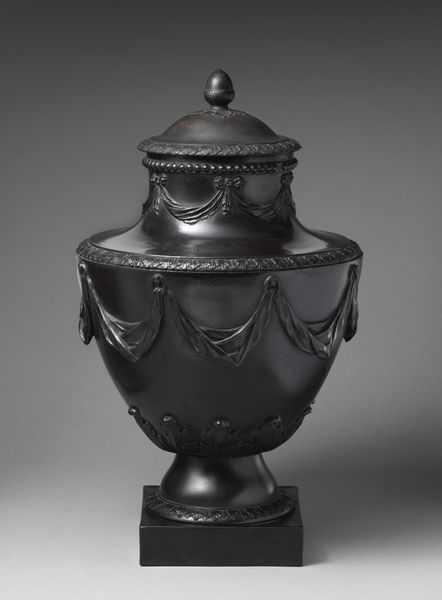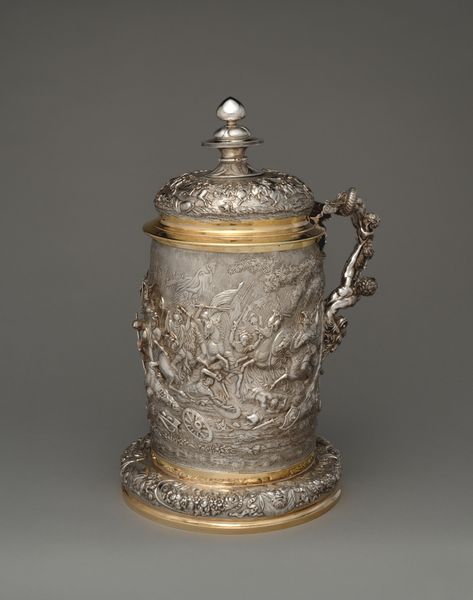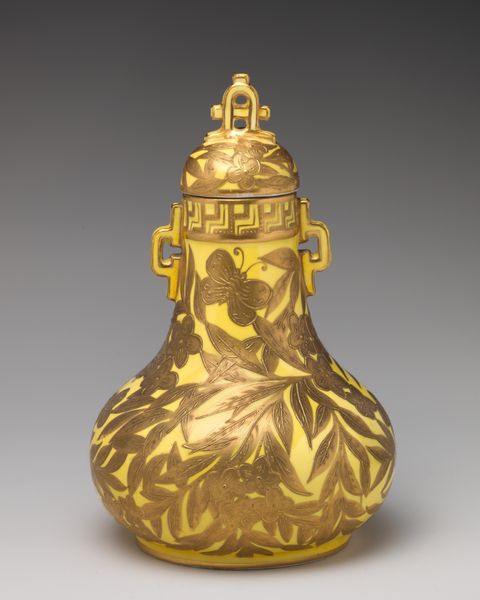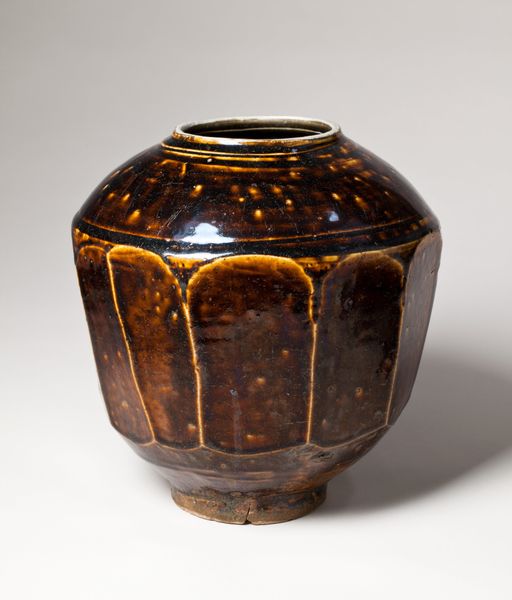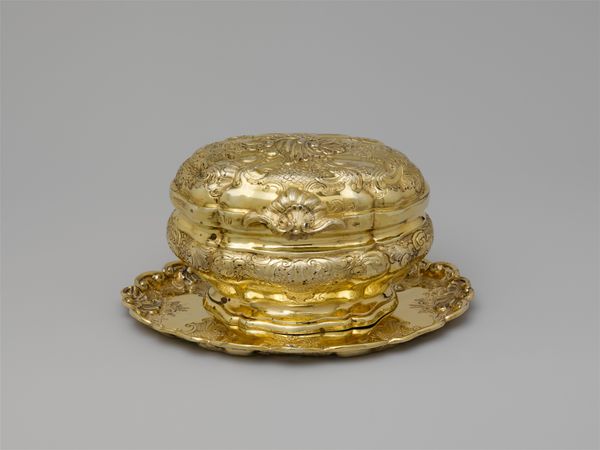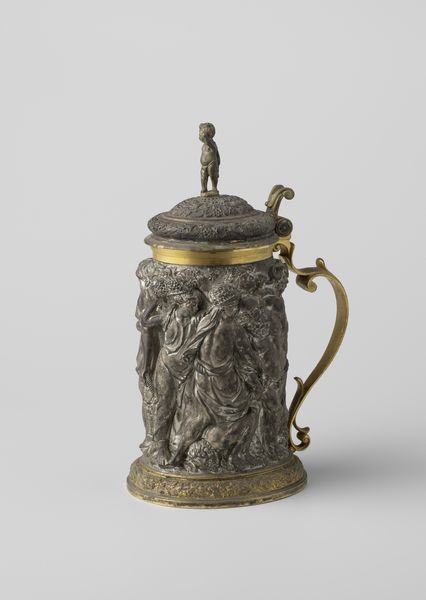
ceramic, earthenware
#
ceramic
#
earthenware
#
stoneware
#
folk-art
#
united-states
Dimensions: H. 10 1/4 in. (26 cm); Diam. 7 in. (17.8 cm)
Copyright: Public Domain
This covered tobacco jar was made by Lyman, Fenton & Co. using molded and glazed earthenware. Its mottled brown surface shows how a slip, or liquid clay, can be used to create rich visual effects. The jar would have been made using industrial processes common to ceramic factories of the time. A mold would have given it a regular, ridged shape, which is then coated in a thick glaze that pools unevenly, creating an unpredictable drip effect. Such effects were popular in the late 19th century and considered quite stylish. The appeal of the piece lies in the combination of mechanical and material processes, and the way that factory production was calibrated to make every object slightly different. It’s not "high art," but nor is it simply a utilitarian object. Appreciating the jar means understanding this tension and seeing how the aesthetics of craft and industry can overlap.
Comments
No comments
Be the first to comment and join the conversation on the ultimate creative platform.
